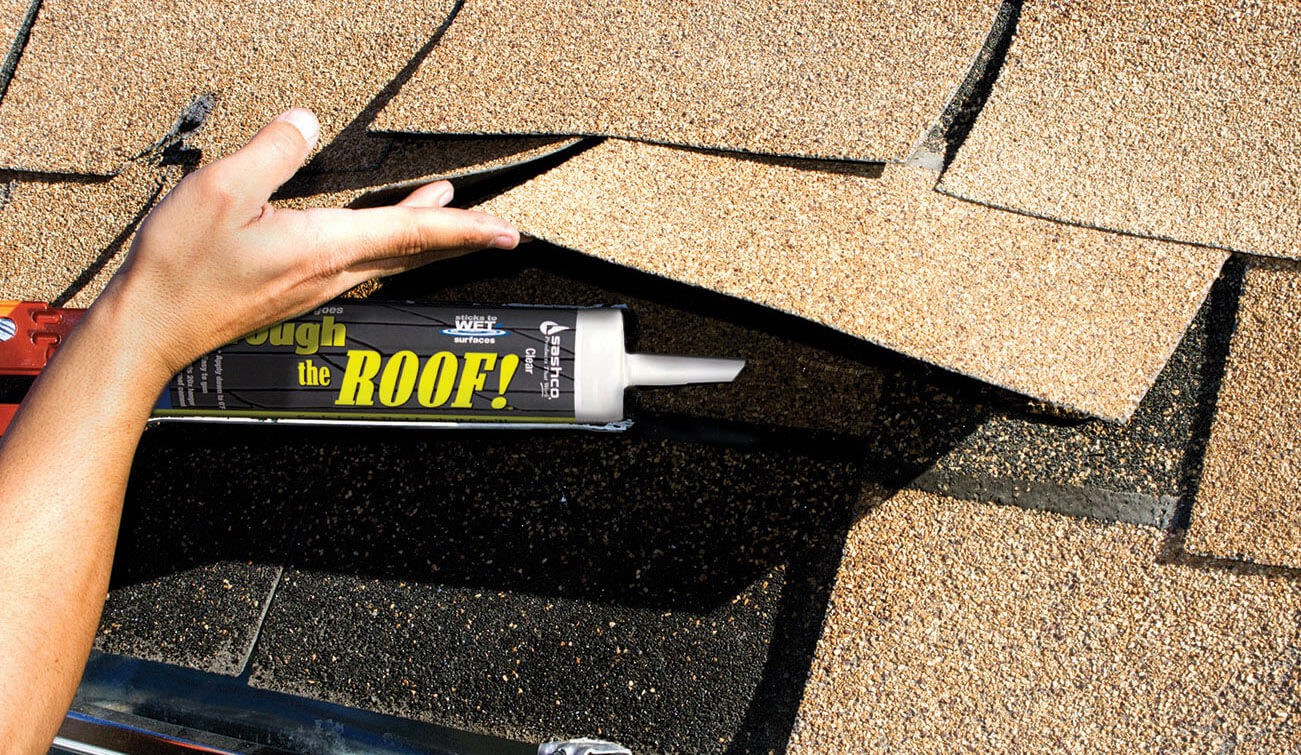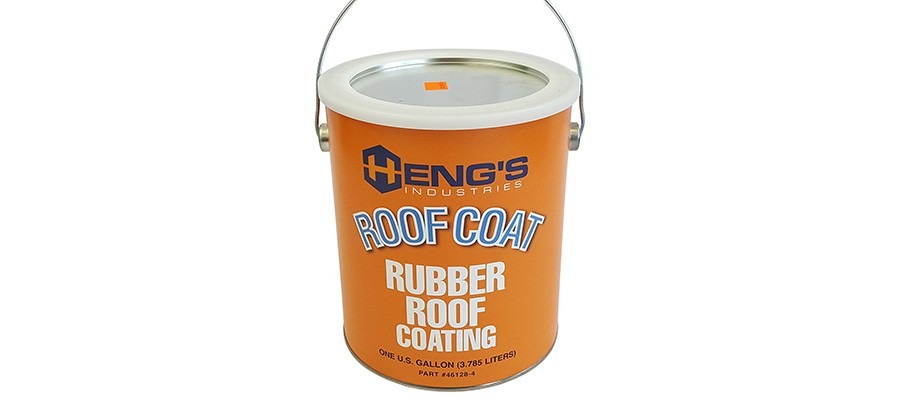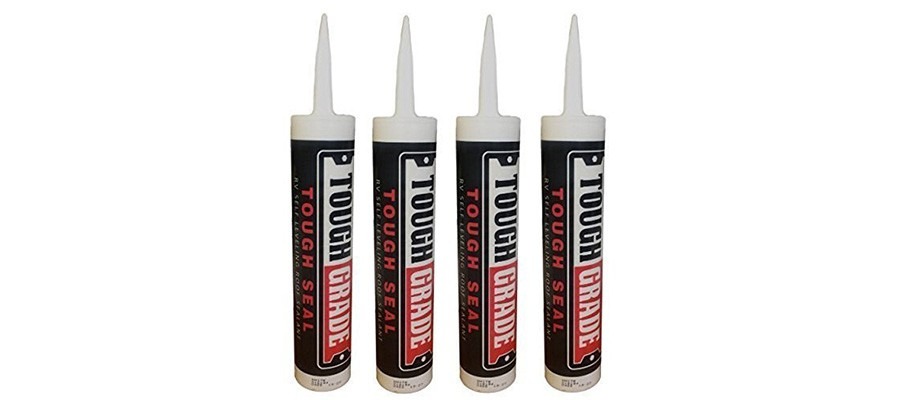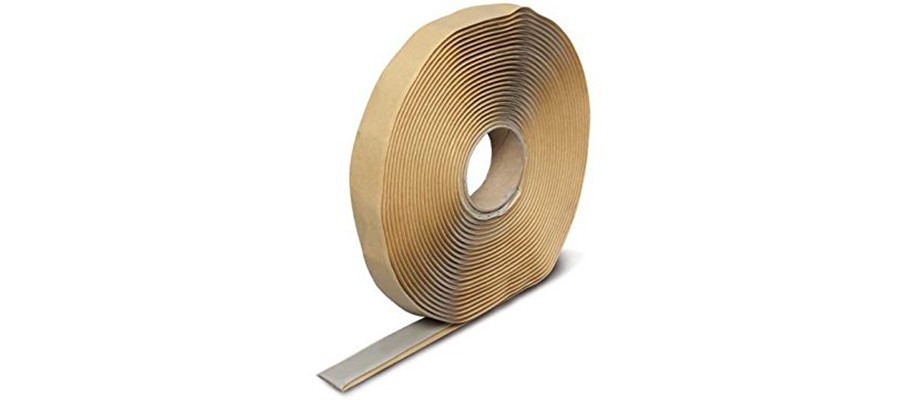
RVs are often exposed to weather impact and so, roof leaks are a frequent problem. The best RV roof sealant can have different acting reagents, differ in type, way of application and so on. The following moments must be observed before the purchase.
- Type of sealants. The RV roof coating can be glue-like liquids or sticky tapes. Depending on the place and character of leakage, each type might be better in the actual situation.
- Need for additional reagents. Some sealants require the primers to be applied before sealing the leakage. Others require the catalyst to start acting and boost the sealing properties. There are also products working right out of the box, without additional components.
- Application. There are self-leveling glues that don’t require manual leveling. Some of the best sealants can be applied twice or thrice at the same spot, some can be painted.
There’s plenty of choice on the market. Keep on reading the RV roof coating reviews below for picking out the best RV roof sealant!
RV Roof Sealant Reviews
Sashco Through The Roof Sealant

This coating review represents an easy-to-go sealant with universal application. It has a wide usage area and high-quality compounds, making it a good choice for fixing an RV roof for a long time.
The thick solution of this vaseline-like sealant doesn’t harden for good, letting it react to the temperature changes and fill the place efficiently while resealing RV roof. It sticks to the variety of materials including aluminum, EDMC and so on, and is advertised to outperform asphalt in durability for 20 times.
This coating works even on wet substances and can get cured in the pouring rain. This makes it highly convenient during repairs since the result can be checked immediately and corrected if needed.
The sealant lets through no water and fits for use around screw heads and in roof junctions. Due to transparent color, it can be used for fixing the scratches of the roofs and preventing leakage. It can be painted as well; so, the repair works become invisible.
With the ability to work literally in any place and any condition, this leakage liquidator could definitely be called the best RV roof sealant, would its properties preserve at application on the top of other sealants. Since many are prone to powdering and cracking over time, the applied sealant gets cracked and removed (with the part of the previous sealant) as well.
Pros
- Low-VOC content lets apply the sealant and use the RV without risk.
- Non-freezing even at -25 F, it can be used even in the Northern regions.
- Non-slipping even on plastic.
Cons
- Must be used with caution on grades – the thick layer might start sagging.
- Limited lifespan at constant spontaneous weather changes (snow and rain).
Dicor 501LSW-1 Epdm Self-Leveling Lap Sealant

This waterproof sealant is designed to fill in the seams and cracks on different types of RV roofs. It can secure the EPDM, aluminum sheeting, TPO, and even roofs made of fiberglass. Besides, it serves well for other surfaces like vinyl, wood, and concrete.
Due to the innovative protecting formula, the sealant self-levels, forming a wider diameter spot covering a larger area and swiftly filling it. Upon getting cured, it leaves an even strong surface; so, it’s good for covering all the RV roof. However, it is particularly efficient at filling the gaps around screw heads and securing the fans and vents tightly, for preventing or eliminating the leakage.
This product fits many materials and secures the leaks efficiently. It definitely deserves the title of the best RV roof coating, while using it for other RV parts might be less sufficient. The reason is the self-leveling property not letting the substance stick to the spot but drip from vertical parts.
The sealant is white but can be painted. It also doesn’t get yellow upon being exposed to rain or wind. Due to the polymer nature, it doesn’t wear out under UV-radiation and isn’t subject to shrinking and powdering over time.
Pros
- Easy to apply, doesn’t require brushing.
- Works well in hot and cold weather.
- Watertight, doesn’t let the rain through vent seams.
Cons
- High consumption – approximately one tube per middle-sized vent.
- Non-reliable tip junction – tends to break and fall off.
EternaBond RSW-4-50 RoofSeal Sealant Tape

This RV roof repair sealant is a tape with high elasticity and the easiness of use. The tape is made of several chemical compounds including non-curing rubber and represents an immediate adhesive, which work best for emergency repairs. Still, it does require the preliminary surface preparation (cleaning, degreasing) for forming a long-lasting firm seal.
The synthetic resins make the tape stretchy so that it can be applied on different roof surfaces. The thin silicon backing on the adhesive side simplifies the usage, as there are no worries of sticking the tape to the wrong place. There is also a UV-protected coating layer letting the sealant preserve its shape and color under the sun’s impact.
The tape can be applied on top of different materials. It works well with rubber or metals and its derivatives like EPDM and even fits the galvanized metal surfaces. In this regard, it is also used for securing the screw heads leaks and seams of the metallic constructions.
While the RV sealer is very simple to use, it sticks to a coating at once; so, there’s no room for mistakes. A light hand pressure makes it form a tight bond, and there’s no possibility to detach the tape or stretch it along.
Pros
- Watertight, it doesn’t lose properties when exposed to rain.
- Can be applied over itself fitting the most difficult RV roof repairs tasks.
- Available in different sizes (width and length) for big projects and small repairs.
Cons
- Doesn’t stick to silicone.
- Rather high price.
Proguard F99911 Liquid Roof Gallon

The coating differs from the ones offered in the regular RV rubber roof coating reviews, as it represents a secondary roof itself. Once cured, the Proguard F99911 makes a solid bit of EPDM, with the same feel and properties.
A thick liquid while inside the can, the product is easy to cover with a trowel, brush, or squeegee. Flowing into all the cracks, seams and gaps, it makes an undetachable layer of an EPDM rubber over the RV roof, letting it look and serve as a new one.
It doesn’t self-level; so to create an even surface, the tools must be applied. To avoid many bubbles upon application and ensure the diffusion of the primary roof sheeting, and the liquid EPDM, the roof surface must be thoroughly cleaned and degreased.
The sealant is highly adhesive and hardens swiftly if applied in a small quantity. If distributed with the trowel or another tool, the instruments must be cleaned up with mineral spirits at once (or be disposed of).
Upon curing, the sealant forms a hard sheet of EPDM rubber, with the same properties. Not being water-based, it doesn’t let through any water and can endure the best rain and wind efficiently. It preserves a shiny white color that doesn’t fade or shrink in the sun.
Pros
- Sticks to most of the rubber and metal materials.
- One gallon pack of the sealant forms the 42 sq ft EPDM sheet — enough for a small buggy roof.
- Easy to distribute and roll over.
Cons
- When applied over a wide area, the bubbles can appear upon application.
- When opened, the sealant in the can gets rubberish quickly (not practical for small occasional repairs).
Heng’s Rubber Roof Coating

Designed for application over wide areas, this coating also works well as RV rubber roof sealant. It has the best consistency of thick latex paint and is simple to roll on with the brush or a roller. The liquid structure lets this roof protection fill the tears and cracks efficiently and seal the gaps like vent holes and trailer junctions. With the medium consumption, a gallon of the Heng’s sealant covers about 40 sq ft of the RV roof.
Being developed to seal and coat the rubber roofs, this sealant also fits non-rubber nature (EPDM, soft plastic, and some other metals). It requires the preliminary surface preparation before application while the sealant is distributed easily forming an even white layer of a shiny coating.
Once cured, the sealant repels the UV radiation, preserving its shape and color upon the lasting exposure to the sun and thus, works well for travel trailer roof sealing. The dried sealant can withstand small-to-medium physical impact (like a thump of a fallen branch) without starting to powder and crack.
Pros
- No primer or catalyst is needed.
- Eco-friendly: the non-toxic sealant doesn’t pollute nature.
- Easy to wash out before it starts to dry.
Cons
- Not watertight in a long-term period (due to Acrylic components).
- Doesn’t stick to fiberglass and old rubber.
ToughGrade Self-Leveling RV Lap Sealant

This coating is designed to seal the seams, gaps, roof edges, vent holes, cracks located on horizontal surfaces. While forming the large thick beads when applied, it self-levels upon the time, creating an even glossy surface.
The sealant fills the tears well, securing the small and average leakage efficiently. It stays flexible over a long time and thus can withstand different weather and other physical impacts like sleeting rain, branch falling, etc.
The ToughGrade can form an adhesive bond with many materials: rubber and rubber-like substances, fiberglass, vinyl, metal. It doesn’t affect the roof color and doesn’t break the original roof / previous coating layer. However, it must be applied above other sealants with caution since it might not react properly with silicone-based adhesives. On a prepared surface, it works the best it can do as a screw head and vent holes sealant, forming a flexible but tight connection between the roof and its elements.
This self-leveling product is water- and UV proof; it doesn’t form a mildew and doesn’t lose color and properties upon the lasting exposure to the sun and high humidity. It makes a reliable trailer roof sealer, while the color choice is limited to the white option and might not fit some fancy-painted RVs (the seal might stand out).
Pros
- Can be applied over itself in layers.
- Can be leveled with a trowel or a squeegee; easily removed with mineral spirits.
- Good price, especially for a 4x pack.
Cons
- The self-leveling properties can decrease in the cold temperature.
- The tube container is flimsy and unhandy to operate.
Dicor BT-1834-1 1/8″ x 3/4″ x 30′ Butyl Seal Tape

The simplicity of use, immediate result, and low price make this tape the best choice for the travel trailer roof sealer. It doesn’t require specific knowledge or skill to apply and can be used both horizontally and vertically, inside and outside the RV.
The tape is narrow, enabling the sealing of the gaps and cracks in the tight places like screw heads, corners, AC vent holes, and so on. The butyl tape adheres hermetically to a lot of surfaces, including metal, steel, plastic, and rubber derivatives. Due to the high flexibility, it can be applied along non-standard joints and seams, to protect the trailer roofs from leaks and mildew appearance.
The butyl rubber and the tape backing are water-resistant preventing the seams from humidity. The sealant is little affected by the UV radiation and temperature changes and keeps holding on to the surface in the cold temperatures as low as 0 F. However if applied in cold, this sealant might be less adhesive than usual.
Pros
- A tight roll enables quick and trouble-free application, without bubbling and tape detachment.
- Can be applied as a secondary seal on top of roof coating.
- Can do fiberglass joints and seams.
Cons
- Tends to overstretch (forming too thin a layer) if the backing is removed.
- Too stiff to use around the sharp corners.
Buyer’s Guide
How to Seal RV Roof Properly?
Regular inspection and maintenance of roofs will prolong the life of your RV considerably, as well as save a lot of money. Sealing some minor leaks once in two-five years is less costly and annoying than changing the roof sheeting, working out the joints, installing vents, and so on.
Still, in order to keep the small cracks and tears unharmful and not let them grow, a proper roof sealing is a must-do. The process itself is quite simple but requires attention and, in many cases, patience (as many sealants need time to get cured and form a solid junction).
Here are the steps to take when sealing RV roof properly:
- Inspect the potential leakage or a crack. Check the problem spot and define the nature of the trouble. If the roof structure isn’t damaged, then proceed with sealing the RV roof. Yet, if there are soft spots or water inside the roof, then, more serious repairs are needed.
- Remove the cracked old sealant and debris. Brush the surface with the middle-hard brush and apply some detergent of non-aggressive nature. It would be good to degrease the surface, if possible.
- Apply the primer, if required by the type of sealant you use. If not, simply pour the glue-like substance or stick the tape to the surface. If needed, distribute it evenly with the trowel, a squeegee and alike tool.
- Let the sealant cure, according to the manufacturer’s instruction. Upon that, check if the seal is firm and water-tight. If needed, apply a coating layer above the sealant.
How Long does Roof Sealant Take to Dry in Average?
Depending on the type of the sealant and its compound, it may take quite different times (from a few minutes to a few days) for complete drying. It also depends on the conditions when the sealant was applied in: the cold temperature, moist environment prolong the curing period considerably. The tapes are designed to provide immediate diffusion while liquid coating and sealant take much more to dry.
How to Remove RV Roof Sealant Quickly?
While many RV roof sealants are packed in convenient tubes or can be adjusted manually (the tapes), mistakes still can happen during the application even of the best products.
Tips on removing the remnants of the old sealing substance:
- Check if it cracks and can be removed mechanically (e.g. with a trowel or a brush);
- Apply the mild solvents approved by the RV manufacturer;
- Remove the sealant with the cloth or hard tools;
- Wipe the place with the cloth to remove the debris and tiny parts when a new sealant is applied incorrectly and must be removed;
- If the sealant doesn’t dry fast, simply wipe it with the cloth (the spare one, can be thrown away then) or detach the tape from the surface;
- If the sealer reacts immediately, apply a mild household solvent to it, then gently detach it;
- Heating or freezing some sealants might help. However, the others (e.g. the tapes) can become stickier with the temperature grow. Always check the manual before warming up or cooling the sealant.
What Sealant to Use on an RV Roof?
The choice of sealants on the market depends on different areas of the RV roof that need to be repaired — roof vents, antennas, skylights, air conditioners, etc. Besides, the roof material is also significant, it can be rubber or fiberglass. It’s also necessary to learn the RV manufacturer’s recommendations before buying a certain product.
The classic smooth rubber roof membrane needs a sealant for EPDM rubber. The textured rubber membrane requires products designed to cover Alpha roofs. The thermoplastic polyolefin roofs need TPO-compatible sealants. However, some units match multiple materials.
Here is the list of several types of sealants to consider:
- Adhesive tapes fit sealing nooks and crannies. They feature a single-step application. Some of them are compatible with a row of roof materials.
- Acrylic solutions relate to full-surface coverage.
- The elastic sealants are general-purpose items, but they are often used on movable parts of the roof.
- Silicone self-leveling sealants are real time-consumers. It lays itself flat and without any cracks or gaps that might lead to leaks on the RV roof.
- Liquid solutions do their job in corners and on extremely uneven surfaces.
Apart from the type of sealant, it’s crucial to choose the UV-resistant units that can protect roofs against being dried out of the sun, as well as from cracks and discoloration. Some damage is possible by the ravages of time. If the sealant is resistant to vibrations, bumps, and even the roof’s weight when the camper is on the road, the roof will save its integrity despite the difficult terrain.
Note that sealants come in different colors to let the buyers choose the product that matches their RV roof’s design.

My name is Brandon, and I’ve been interested in cars since I was a kid. I got a bachelor’s degree in Automotive Technology and worked in a private car workshop. I have two cars that have been completely upgraded with my own hands. So I successfully put all my knowledge into practice.
Last update on 2026-01-06 / Affiliate links / Images from Amazon Product Advertising API
